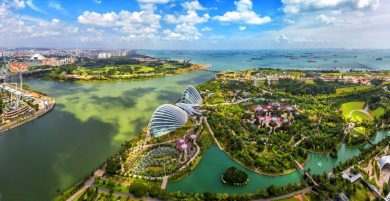Balancing Act At Asean Summit With Diplomacy of Flattery

By Ivan Lim
Former AJA President, Contributor to AsiaN
SINGAPORE: The high-profile appearance of Mr Donald Trump at the 47th Asean summit in Kuala Lumpur on Oct 26 has shed light on how deftly or otherwise the South-east Asian grouping keeps its balancing act in the geo-economic rivalry between the United States and China.
The US President took centre stage at the signing of the peace deal between Thailand and Cambodia – to reinforce the ceasefire that Mr Trump and Malaysian Prime Minister Anwar Ibrahim had jointly brokered following border clashes that had left 46 people dead and disrupted the lives of over 300,000 villagers in July. However, Chinese representatives, who had played a catalytic role, stayed away.
Playing host, Mr Anwar, as current Asean chair, set the tone in putting the world’s most-powerful man on the pedestal, as his Cambodian and Thai counterparts joined in lavishing praise on Mr Trump as an indispensable peace-maker who deserves the Nobel Peace Prize for 2026.
As Asean member-states face the threat of high tariffs imposed by Mr Trump, most see the need to be in his good book to avoid punitive terms of trade for themselves. The diplomacy of flattery produced happy outcomes: Cambodia, Thailand and Malaysia sealed favourable reciprocal trade packages with the US, including a 19 per cent tariff rate.
However, in the case of Malaysia, observers pointed to a clause that seems to tie its hands to aligning with Washington on
trade restrictions or sanctions aimed at third countries. These include India and China, both of which are at loggerheads with the US over trade issues.
Critics said the clause, if followed through, would tilt Asean towards the US orbit, even as Kuala Lumpur claimed it still has a final say on it.
As an entity, Asean has professed its centrality and steers a neutral course to safeguard its collective interests to avoid becoming a pawn in the power play of the two superpowers, US and China.
The plight faced by smaller states seeking to stay neutral was first highlighted by Singapore statesman Lee Kuan Yew in 1973. Alluding to Asean states proposed zone of neutrality at the Commonwealth Heads of Government meeting in Ottawa, he referred to an African proverb and “When elephants fight, the grass suffers”.
He added: “The thought occurred to me that when elephants flirt, the grass suffers. And when they make love, it is disastrous.”
Whether Washington confronts or cozies up to Beijing in their latest trade war – Trump had threatened to impose 100 percent tariffs on China in response to the latter’s restrictions on its rare earth exports – Asean economies remain vulnerable to the potential disruptions to global supply chains and their impact on manufacturing and exports.
Thus, even with the latest truce in the trade war struck between Mr Trump and Mr Xi Jin-ping at their Busan summit on Oct 30, US tariffs remain in effect – 10 per cent for Singapore despite its free trade agreement with Washington, 19 per cent for treaty ally, the Philippines, and Indonesia, 20 per cent for Vietnam, and 40 per cent for both Myanmar and Laos.
The America First policy is designed as a quick fix to restore US trade imbalances and bring back manufacturing as it is also an attempt to break China’s growth momentum. This nationalistic and protectionist drive has opened the way for China to project its credentials as an advocate of multilateral free trade.
Caught up in this tug of war, Asean has deftly sought to deal delicately with the hard-driving American and the soft-pedalling Chinese interlocutors.
Asean took centre stage at its 47th summit by installing, without let or hindrance by the major powers, its new 11th member Timor Leste and expanding as the world’s fourth largest economic bloc with a US$3.6 trillion GDP and a population of 682.7 million in 2024.
On course, to become the Asean economic community in a decade, it has inked at the Asean-China Summit on Oct 28, an upgraded free trade deal with China, covering supply chain connectivity, and a green and digital economy. Analysts hailed the Asean-China Free Trade Area 3.0 upgrade as opening the way for exports to go beyond the US markets hamstrung by Trump’s shock tariffs.




